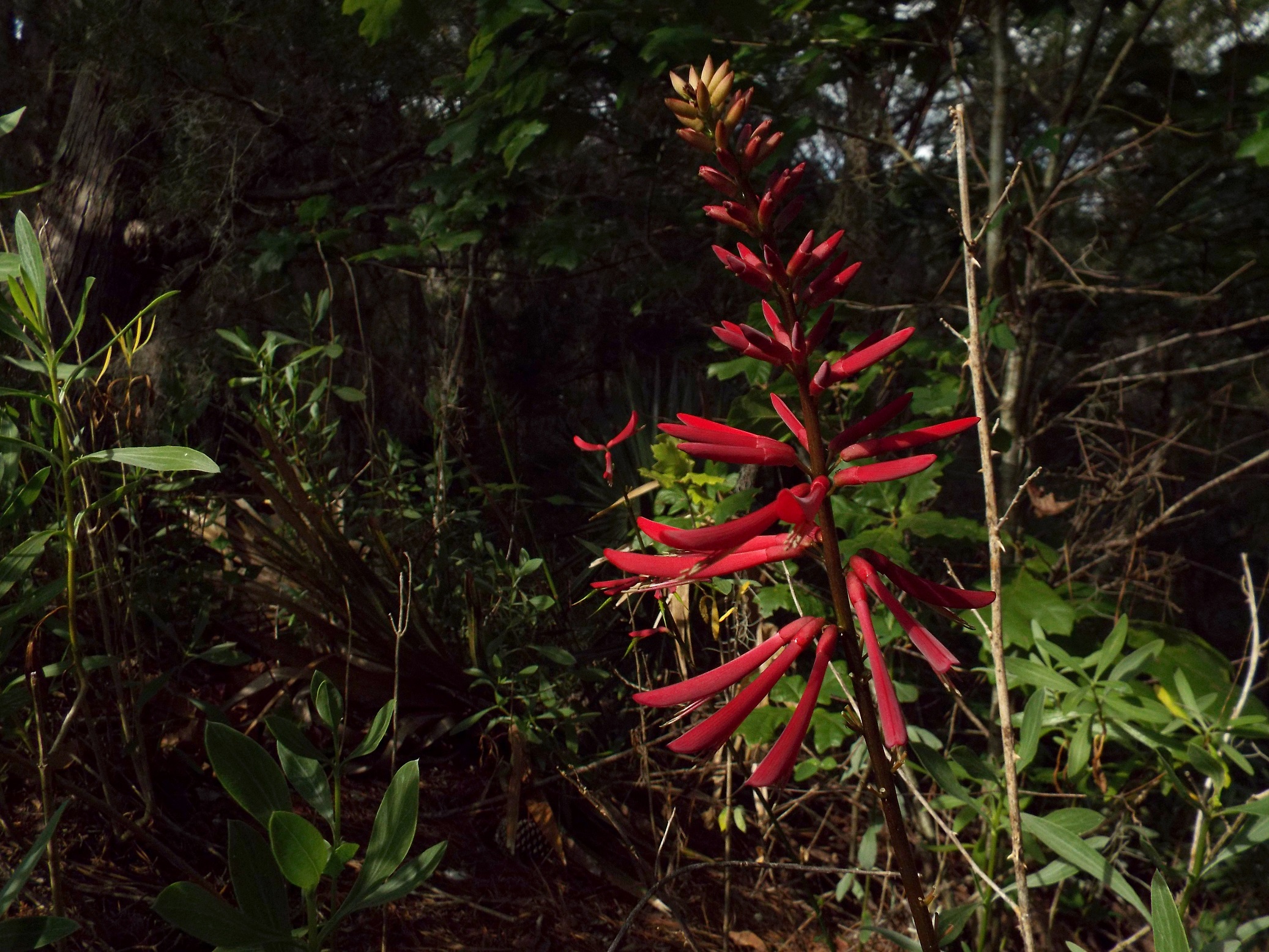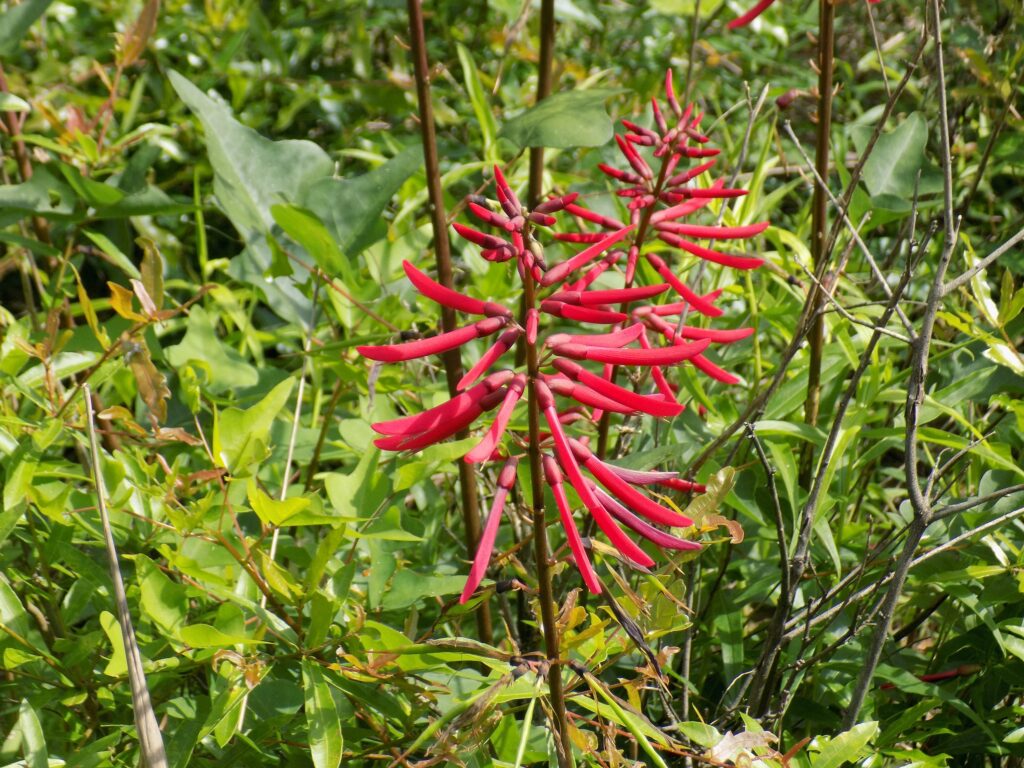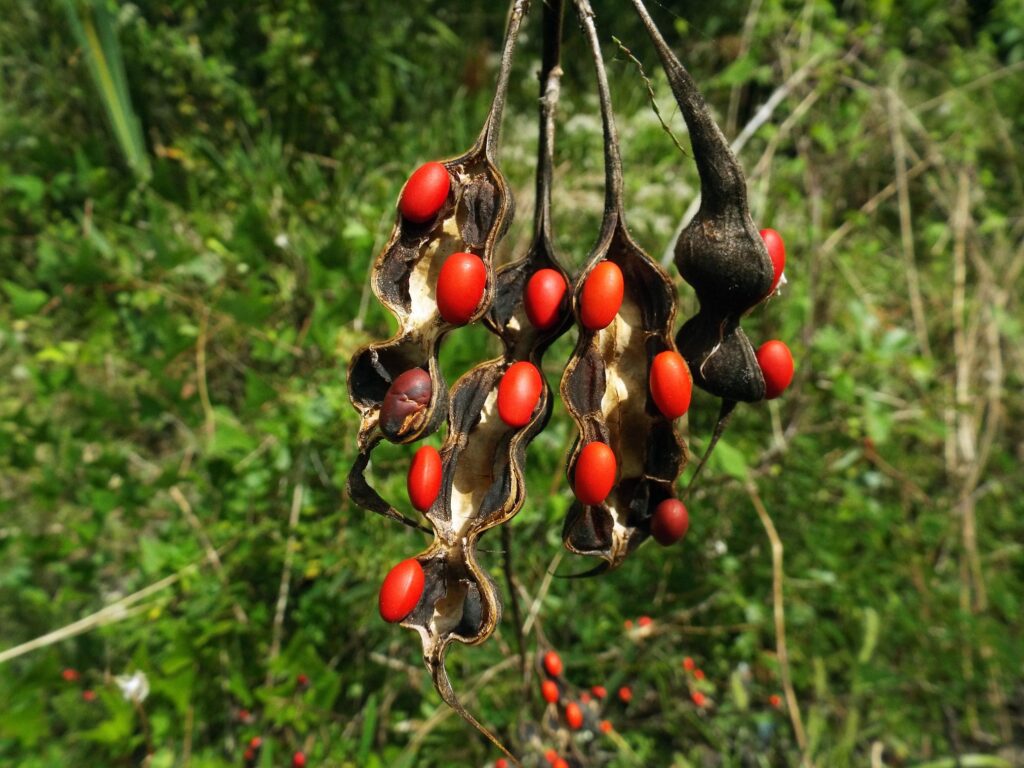


This week for Flora and Fauna Friday we’re greeted by a large and lavish legume. This week we’re gazing upon Coralbean (Erythrina herbacea).
Coralbean is a member of the legume family. Legumes, best known by their edible members, like peas, peanuts, beans, and soy, are a large and varied clade of plants. These species are, for the most part, characterized by large seeds in long dehiscent pods, bilaterally symmetrical flowers, tri-foliate leaves, and the ability to fix nitrogen from the air. However, the family is incredibly diverse and many species do not share all these traits. Coralbean however, does share all of these traits. Coralbean is best recognized by its large size, arrowhead-shaped leaves, long crimson flowers, and coral beans.
Coralbean grows in sandy soil in partial shade in open understory habitats. Coralbean is often found on hammocks and along forest edges. In Central America, Coralbean can exceed 15ft in height. The species is frost intolerant though and dies back to its roots here on the island, normally never exceeding 4ft in height. Other than an annual frost nip, Coralbean is none the worse due to winter, remaining quite a hardy species. In mid-spring the plant begins to flower, producing spiked clusters of long, tubular, red flowers. These stunning blooms are a favorite of hummingbirds. The fruit of coral bean is similar in size and shape to Pole Beans but the difference lies within. Come summer the fruits dry and split, revealing their prize. The seeds of Coralbean are a brilliant scarlet color and dangle by a hair from the schism in the hull. This color is meant to attract birds who disperse the seeds. However, unlike many plants that offer wildlife an incentive to eat their seeds, Coralbean seeds are naked and toxic. The toxicity discourages animals from chewing the seeds. Yet, Coralbean offers them no calorie bribe, like a Dogwood or Magnolia seed would. Thus their seeds are mostly ignored by wildlife.
Coralbean, like the majority of legumes, can fix atmospheric nitrogen. Legumes are not alone in this feat as several other plant groups share the ability. Actually, the plant itself cannot fix nitrogen but it forms a mutualistic relationship with soil bacteria who give it access to this critical element. These bacteria live in special root structures called nodules. Nodules look like small spheres stuck to the side of a plant’s roots. In here the bacteria live and capture nitrogen from the air in exchange for shelter and food. Nitrogen is a crucial element for life. It’s a vital ingredient in the synthesis of DNA and proteins. It also makes up 78% of the air we breathe. Yet, plants can only access this element when it’s in a handful of chemical compounds and also dissolved in soil water. Nitrogen is typically the third-most limiting factor in plant growth, behind sunlight and water. Plants that can fix nitrogen have a distinct advantage in that they can turn sunlight and water into sugar and then exchange that with soil bacteria in return for useable nitrogen compounds. This allows them to outcompete their neighbors in poor soils but increases their requirements for both water and sunlight. This is why beans do well in poor soils but still do better when ample nitrogen is provided.